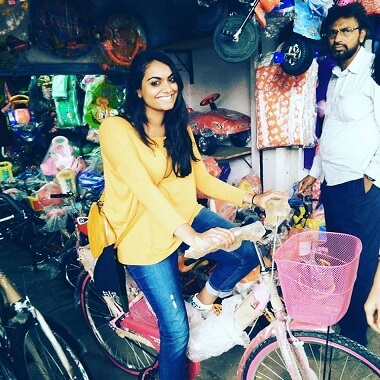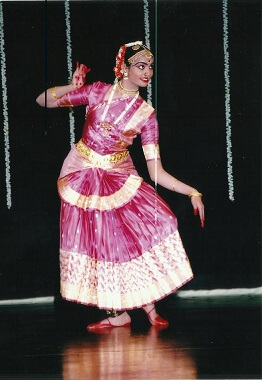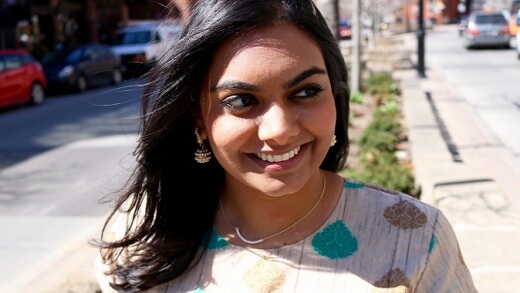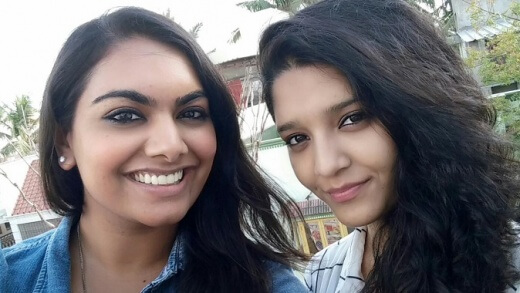“Madam, neenga eana language pesureenga?”
(Translation: “Madam, what language are you speaking?”)—an Ola (the popular, app-based cab fleet service) driver asked me about 5 days ago, after I got off a business call on my phone. I laughed and said “umm English”. He continued, in Tamil, out of confusion:
Driver: “But it’s like…different sounding! Where did you learn that English?”
Me: “I learned it in Canada.”
Driver: “Oh, you went to school there?”
Me: “Haha, yes, I went to everything there. I was born and raised there.”
Driver: “Oh is it?! So you’re a foreigner? But, you look just like an Indian girl! And then you spoke like that, and I was shocked! Not like the English the children speak here.”
Me: “Seriously?!”
Now, it was my turn to be confused. Until that day, no Chennai cab driver had ever mistaken me for a local. Maybe it was because I was wearing a kurta (Indian top) and I wasn’t carrying practically my whole life in my oversized Jansport backpack for once, but it was still strange. I then proceeded to take another call with my business partner, director Manikandan, and spoke in Tamil, and the driver’s head nearly exploded.
This particular drop off experience was a truly rare one for me. On every prior visit to India, and since I moved here for this longer stay for work, almost all native Chennai-ites are able to guess within one look at me that I’m not actually from around here. It didn’t help that, at first, I was embarrassed to speak my Canadian-accented Tamil with drivers to tell them what I needed to, and would just use English, or phone a friend (Who Wants to be a Millionaire life-line style) and have them speak to the driver for me. Tip for tourists who are travelling through a foreign city: invest in a data plan. Until I got used to routes and learned more about the city I had Google Maps routing my path on each trip, as a safety and financial precaution.

At first it was kind of amusing to pretend not to understand Tamil just to see what store clerks would discuss in front of me without fear. I heard everything from “Go get the more expensive saris, she can afford them” to “You say Bengali? No I think she’s Tamil but from Malaysia. 100 rupees bet, done?” I didn’t mind much because, being the miser that I am, I had “fixed rates” to rely on, and knew they couldn’t really rip me off in terms of pricing.
In case you didn’t know, although haggling is most often associated with shopping in South Asia, most brick & mortar stores across India now have fixed prices for all items and do not entertain bargaining, unless you’re shopping in a market-type setup. This is why people like me, with what I like to call “foreigner face” can shop without fear of being charged a much different rate than local folks. But regardless, I always did end up revealing to those who were unaware that I could speak Tamil, just to see what their reaction would be. It was kind of something like Harry Potter removing his invisibility cape with a smirk to imply “yeah I was here all along”. Most were tickled, some slightly worried, but I assured them I took no offense, and have thus made many friends at sari stores across this city in that same way.
But once I shed that self-consciousness to speak my Tamil out in the open, I became amazed at how easily people were able to guess practically all of my ‘biodata’…“You’re Sri Lankan right? But born in a Western country? But you speak a mix of Ceylon and Indian Tamil! Nice, nice!” I became convinced cabs contained some sort of biometric scanning device that informed drivers of my entire heritage, and maybe even my credit score.
But, having foreigner face isn’t all fun and games. On a few occasions non-Ola auto drivers have tried driving around an area in circles (again, thank goodness for Google Maps) or charging double or triple the metered rates. But, the deceit can sometimes stretch much further than transportation.
 For instance, a few weeks ago I went in search of a new Bharathanatyam teacher to attend classes with while here this summer. I was connected to a highly lauded, older teacher who happily accepted me as a new student after a quick meeting where I told her how I had learned dance since I was little, completed my arangetram and now just wanted to learn a different style and brush up on my technique; she told me to come for class the very next day.
For instance, a few weeks ago I went in search of a new Bharathanatyam teacher to attend classes with while here this summer. I was connected to a highly lauded, older teacher who happily accepted me as a new student after a quick meeting where I told her how I had learned dance since I was little, completed my arangetram and now just wanted to learn a different style and brush up on my technique; she told me to come for class the very next day.
Within 10 minutes of my first class she sat me down and told me she’d like me to do an approximately 15 minute solo performance in a program taking place next month – a prestigious showcase at one of Chennai’s largest temples. I was shocked, and confused. I had only danced for about 2 minutes in front of her.
Me: “How do you know I’m good enough to perform by next month, ma’am? I’ve been out of touch for years”
Teacher: “I’ve been doing this for decades! I know who can dance even just by watching them walk. I knew yesterday itself. It’ll be a great achievement for you, and I would be so proud to say I have a new foreign mentee. You’ll do this program.”
Me: “I don’t think I have the time to prepare, amidst my work and all the things I need to get done here this summer…”
Teacher: “It’s nothing. You can do it. You will do it. And this program won’t cost much either. It’s just Rs. 50,000”
That’s about $1000 Canadian dollars. That was apparently for the temple’s fees, lighting, the orchestra, sound, etc. Her lesson fees were included in that, but “were a very nominal amount”. Costume, hair, jewellery and makeup were all additional, but wouldn’t be much according to her.
I’m well aware that there are many students of dance and music, like me, from North America and Europe, who come to India specifically for training and performances, and may actually spend whatever it takes for the chance to perform at coveted showcases.
But, I’m just not one of those people. I am the kind that sticks to metered cabs and autos where I know there’s a system in place to save me from getting played.

I openly told her I did not think I would be ready to give a performance here with confidence in a month and had no desire to embarrass myself, and definitely did not have that kind of money to spend on a performance; I really just came to learn.
Teacher: “Fine. 40,000 then.”
I never did get a clear explanation as to why the price suddenly became so flexible, but as you may have guessed by now I didn’t go through with the program, even at its sale price. And funny enough I wasn’t able to reach that dance teacher again to attend regular classes.

 Dilani Rabindran
Dilani Rabindran









